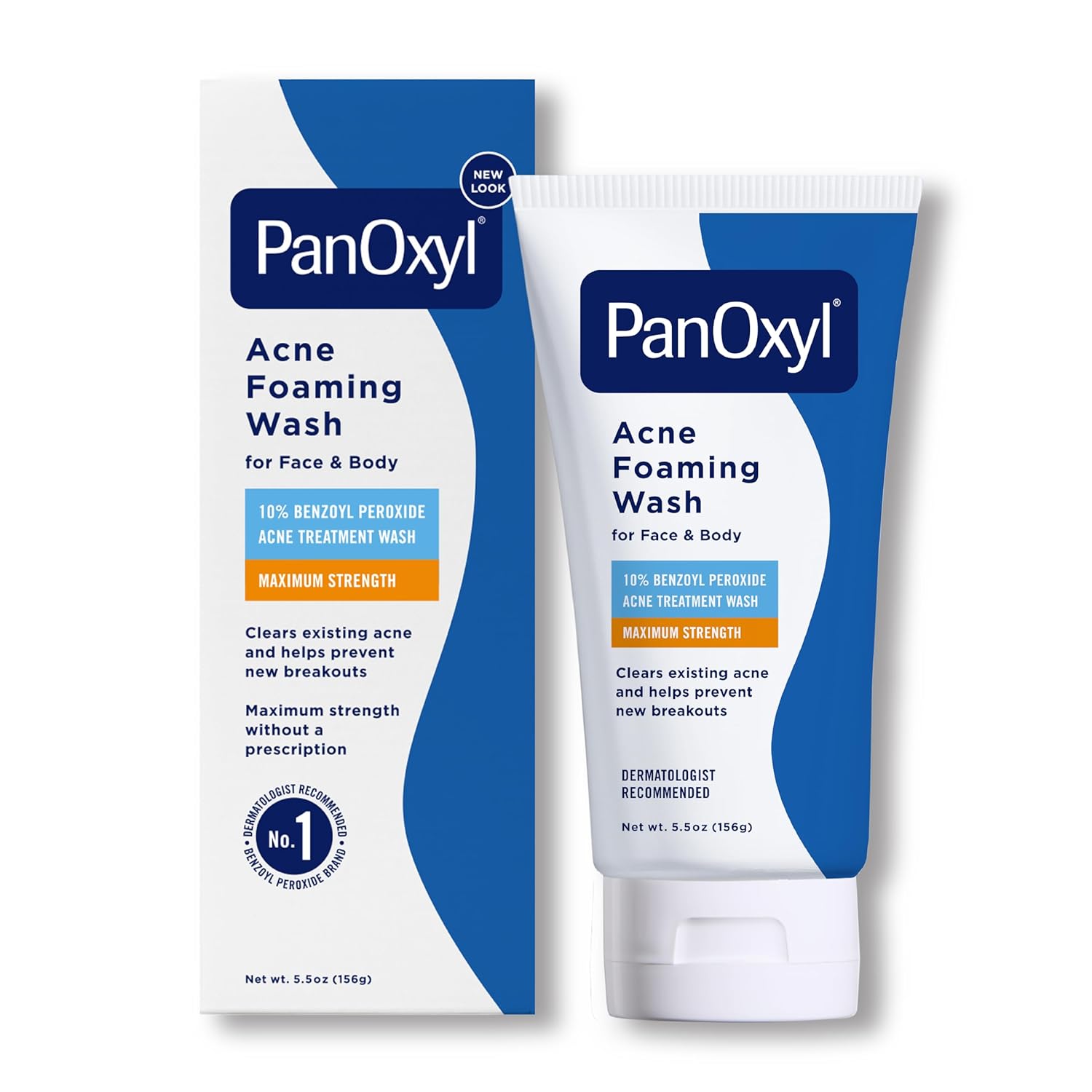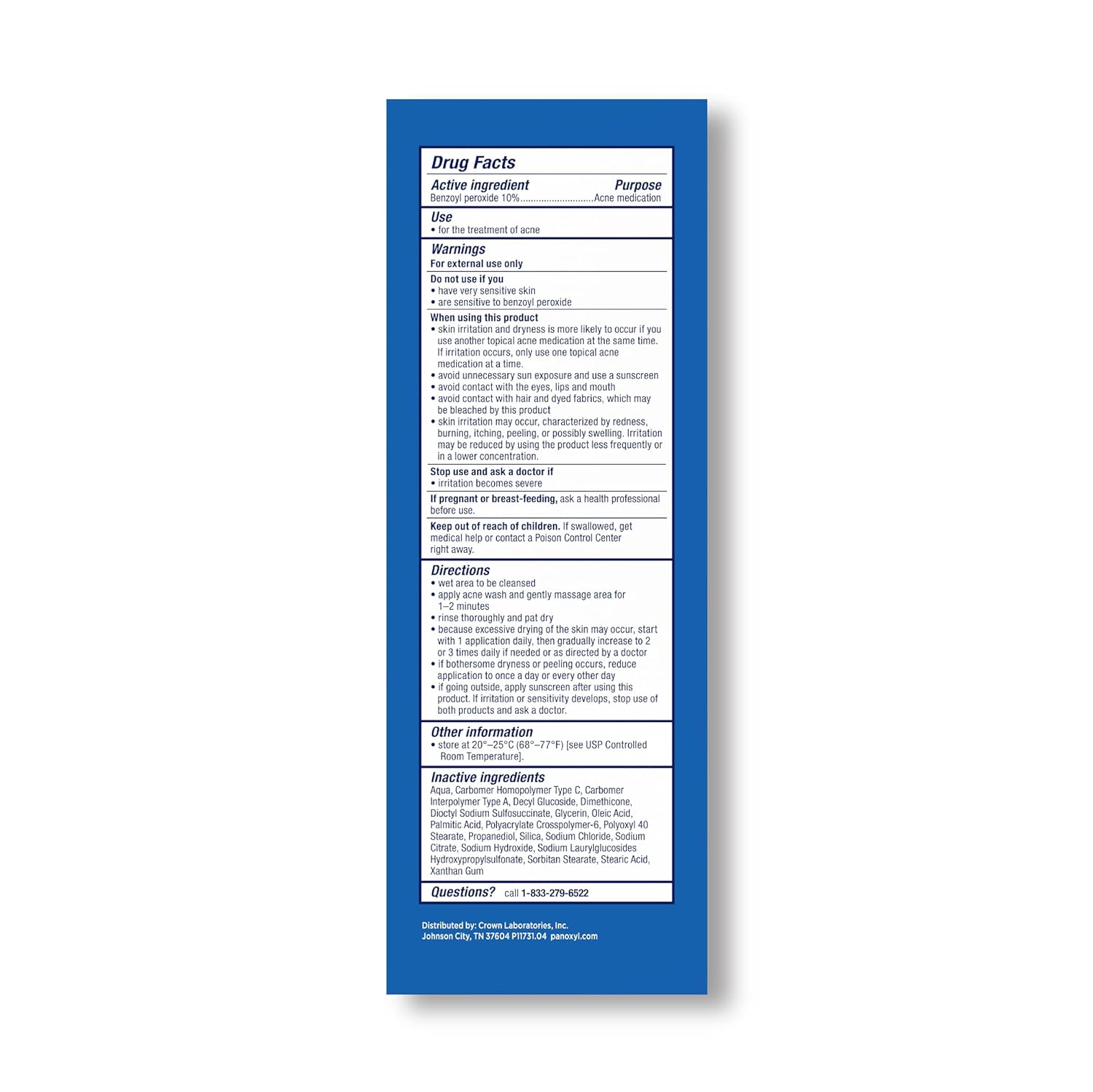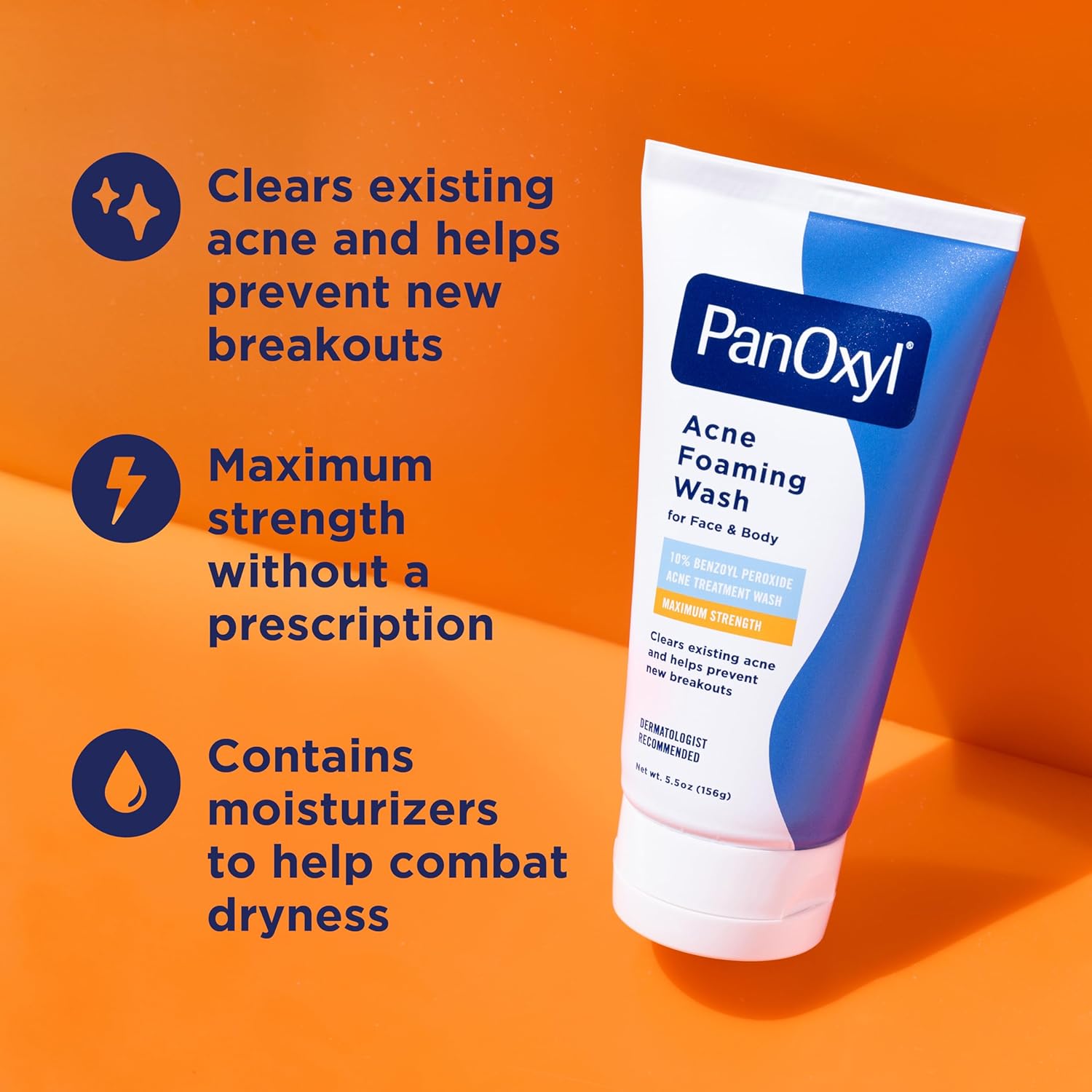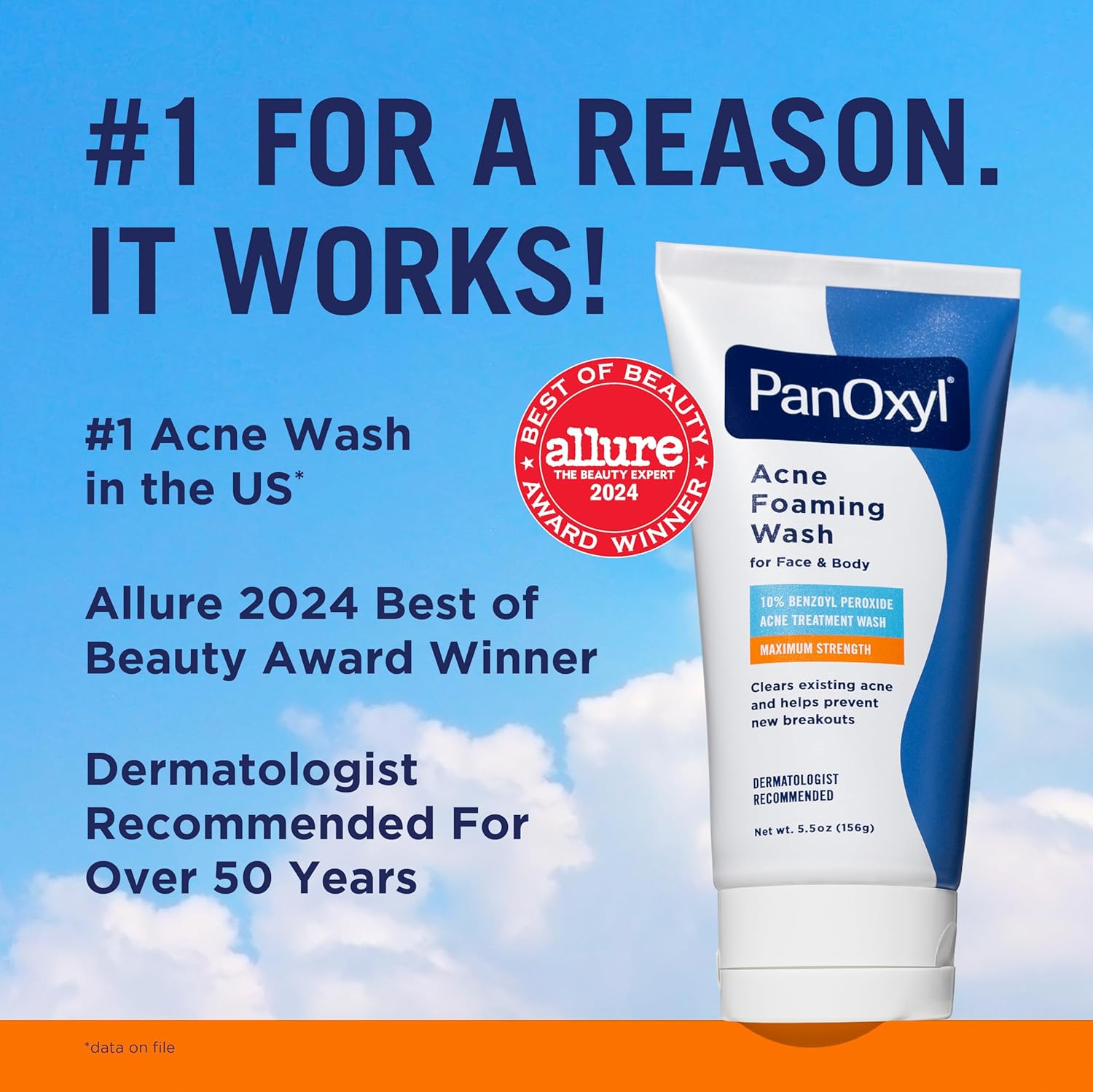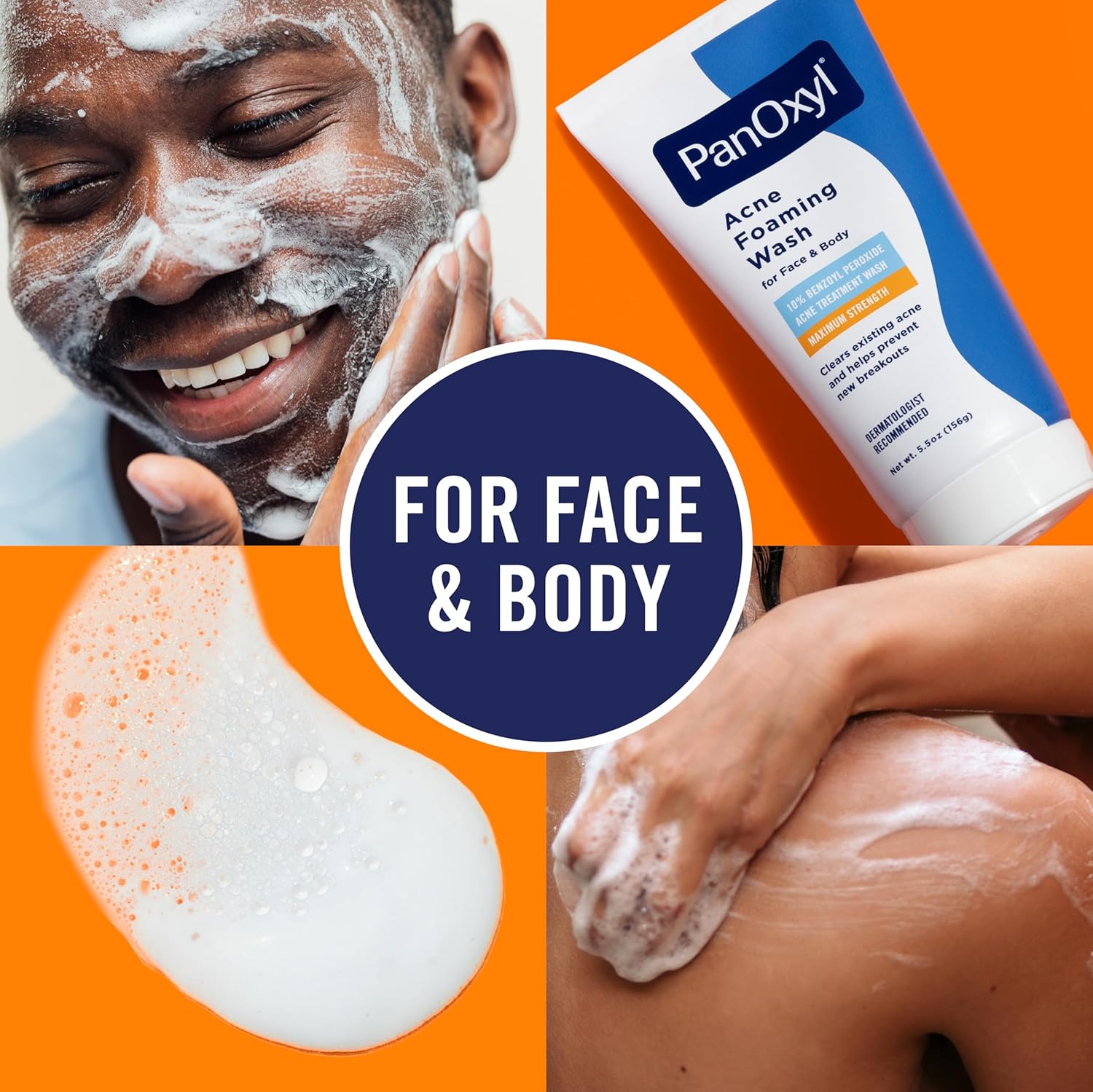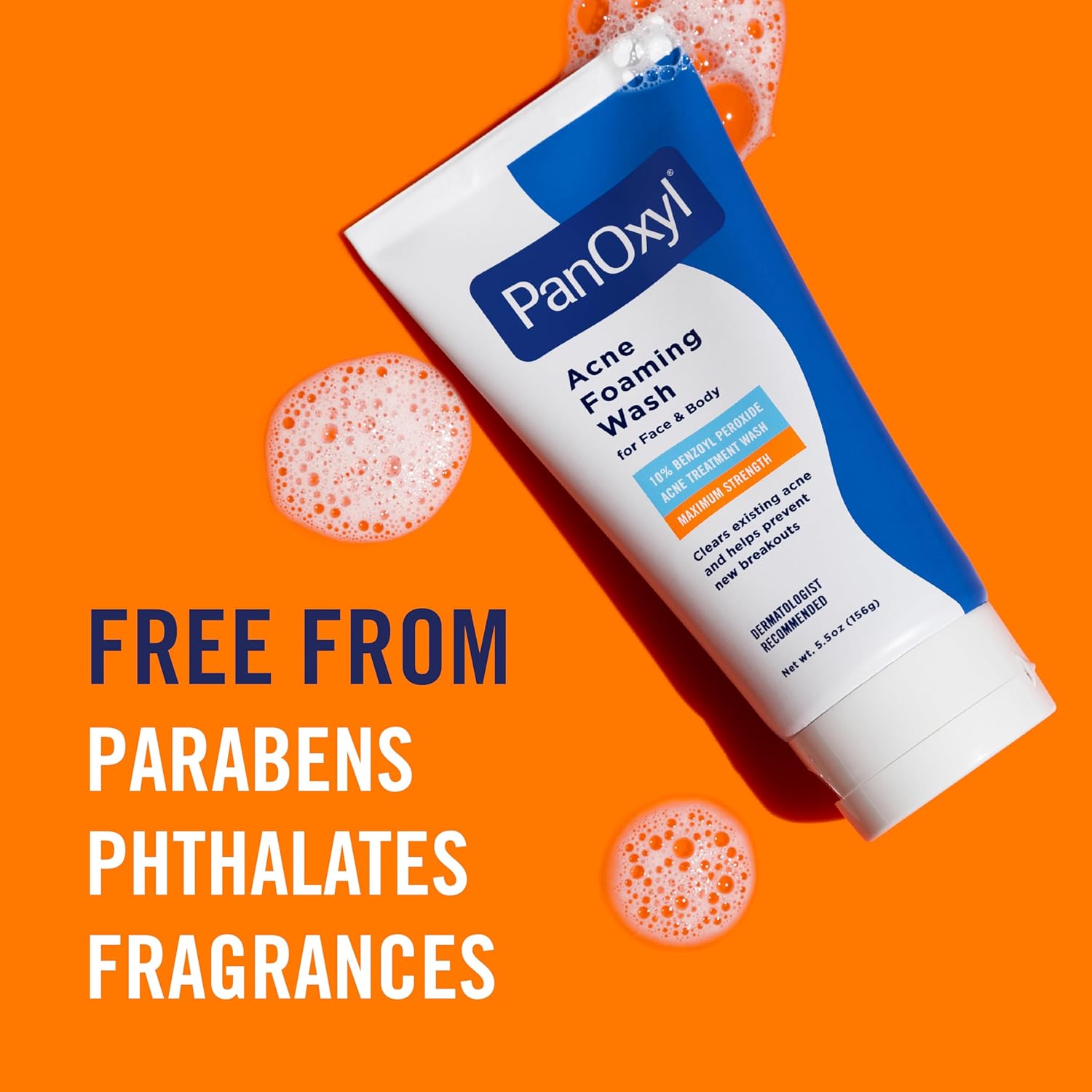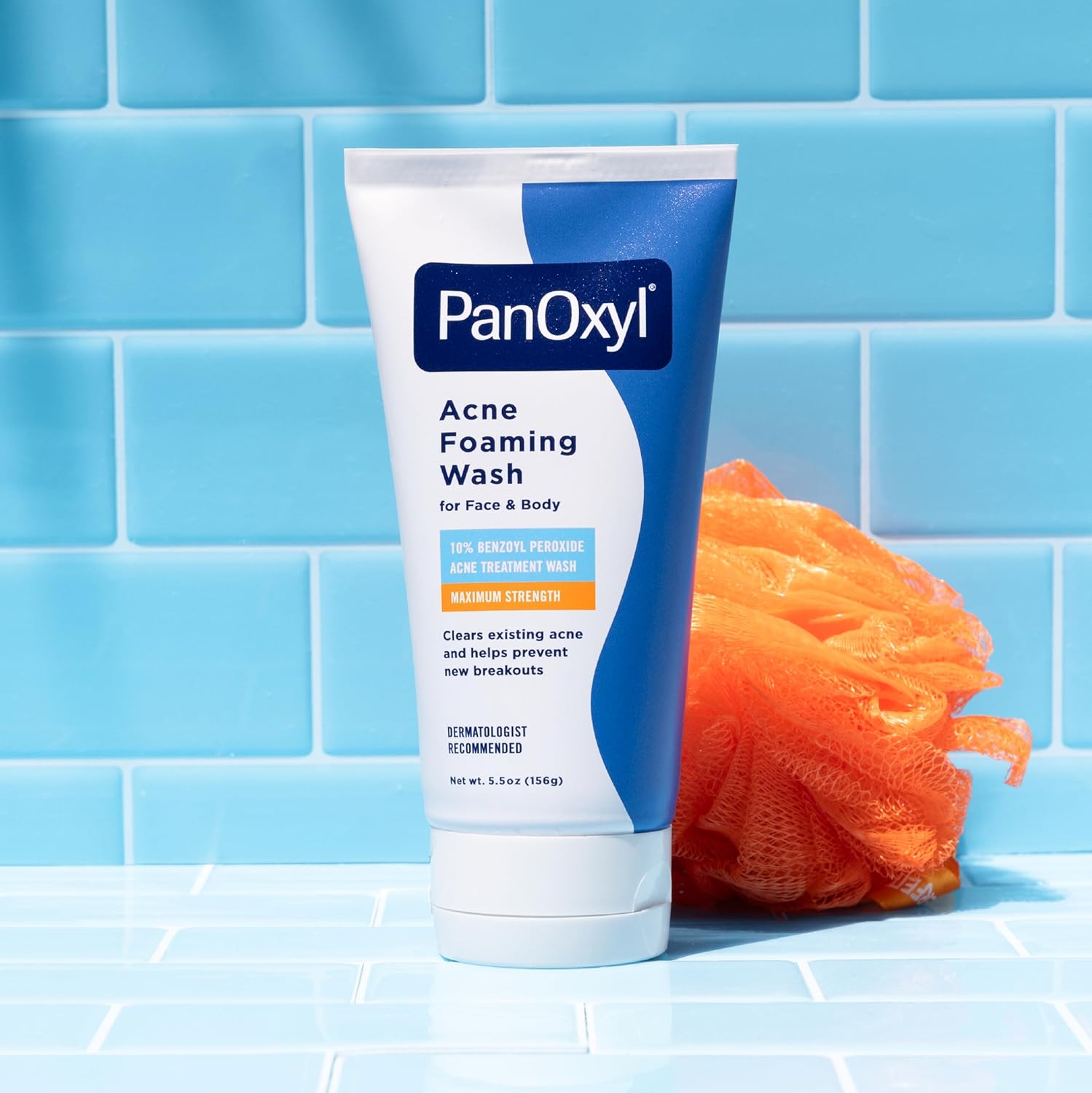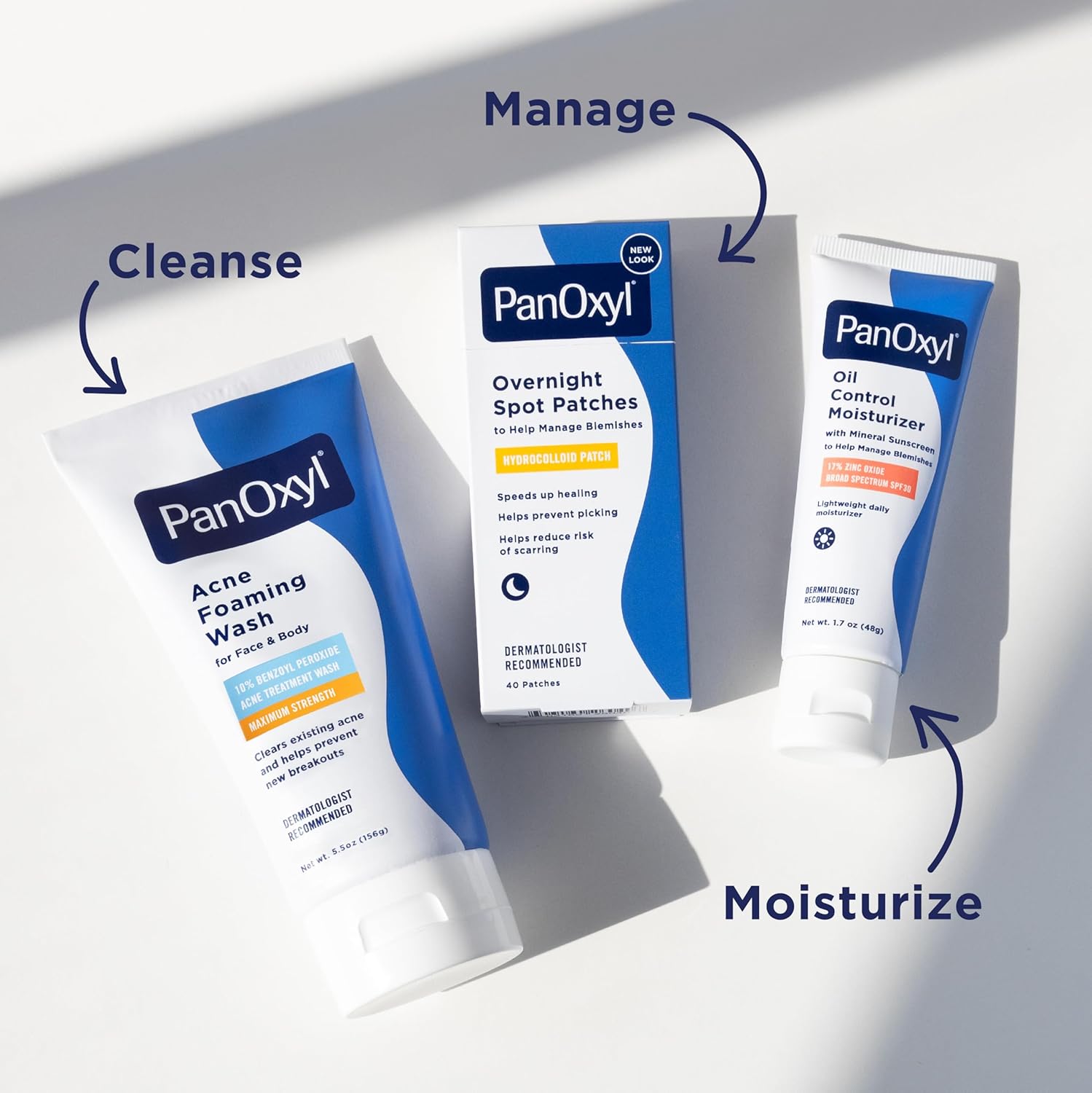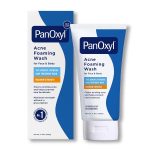
PanOxyl Acne Foaming Wash Benzoyl Review acne treatment Buying Guide – Oemiu
PanOxyl Acne Foaming Wash Benzoyl Peroxide Review: A Comprehensive Buying Guide
Navigating the world of acne treatments can feel like wading through a swamp of promises and complicated ingredients. With countless products vying for your attention, it’s easy to feel overwhelmed and unsure which one will actually deliver results. PanOxyl Acne Foaming Wash, with its active ingredient benzoyl peroxide, has emerged as a popular contender in the fight against breakouts. But does it live up to the hype? This comprehensive guide will delve deep into the pros and cons of PanOxyl, helping you determine if it’s the right solution for your specific skin needs and concerns. We’ll explore its effectiveness, potential side effects, how it compares to other acne fighting washes, and provide you with practical tips for incorporating it into your skincare routine.
Understanding Acne and Benzoyl Peroxide
Acne, a prevalent skin condition affecting millions worldwide, arises from a complex interplay of factors. Excess sebum production, clogged pores, bacterial proliferation (particularly *Cutibacterium acnes*, formerly known as *Propionibacterium acnes*), and inflammation all contribute to the formation of pimples, blackheads, whiteheads, and cysts. Before diving into PanOxyl, it’s crucial to grasp how benzoyl peroxide tackles these root causes. Benzoyl peroxide works as both an antimicrobial and a keratolytic agent. As an antimicrobial, it releases oxygen into the pores, creating an environment hostile to *C. acnes* bacteria. This helps reduce the bacterial load, a key step in preventing and treating inflammatory acne. As a keratolytic, benzoyl peroxide helps to loosen and shed dead skin cells that can clog pores, preventing the formation of comedones (blackheads and whiteheads). This dual action makes it a potent weapon against various types of acne lesions.
The effectiveness of benzoyl peroxide is well-documented in dermatological research. Studies have consistently shown its ability to significantly reduce acne lesions, making it a first-line treatment option recommended by dermatologists. However, it’s important to note that benzoyl peroxide isn’t a one-size-fits-all solution. Its strength, formulation, and how it’s integrated into a skincare regimen all play a role in its efficacy and potential side effects. Furthermore, understanding your specific acne type – whether it’s mild, moderate, or severe, and whether it’s primarily inflammatory or comedonal – is essential for determining if PanOxyl, and benzoyl peroxide in general, is the right choice for you. For example, individuals with sensitive skin may need to start with a lower concentration of benzoyl peroxide and gradually increase it as tolerated, while those with severe acne might require a combination of treatments, including prescription medications.
Finally, remember that patience is key when using benzoyl peroxide. It typically takes several weeks, even months, to see significant improvement in acne. Consistent use and adherence to a well-designed skincare routine are crucial for maximizing its benefits. While benzoyl peroxide can be highly effective at treating inflamed acne, it’s also important to consider other acne solutions if you are struggling to see results. Don’t be afraid to consult a dermatologist for personalized guidance and recommendations.
PanOxyl: Strengths, Formulations, and How to Choose
PanOxyl distinguishes itself with its focus on benzoyl peroxide-based cleansers. Unlike some acne treatments that come in the form of creams, gels, or lotions, PanOxyl primarily offers foaming washes. This delivery method is particularly appealing because it allows for targeted application and easy rinsing. The foaming action helps to lift away dirt, oil, and debris from the skin’s surface, enhancing the penetration of benzoyl peroxide into the pores. This can lead to more effective acne treatment compared to leave-on formulations that may not be as easily absorbed. The primary active ingredient, benzoyl peroxide, is available in different strengths, typically ranging from 4% to 10%. These varying concentrations allow users to tailor their treatment to the severity of their acne and their skin’s tolerance.
Choosing the right PanOxyl formulation involves considering several factors. Firstly, the strength of benzoyl peroxide is a critical consideration. If you’re new to benzoyl peroxide or have sensitive skin, starting with the 4% formulation is generally recommended. This lower concentration minimizes the risk of irritation, dryness, and redness, common side effects associated with benzoyl peroxide. As your skin becomes accustomed to the treatment, you can gradually increase the concentration to 10% if needed. However, it’s important to remember that higher concentrations aren’t necessarily better. Using too high a concentration can lead to excessive dryness and irritation, which can actually worsen acne in some cases. Secondly, consider your skin type. If you have oily skin, the foaming wash formulation is likely to be a good fit. The foaming action helps to remove excess oil and prevent pores from becoming clogged. If you have dry skin, you may need to use PanOxyl less frequently or follow it up with a hydrating moisturizer to counteract any potential dryness. Look for non-comedogenic moisturizers that won’t clog pores and exacerbate acne.
In addition to the standard foaming wash, PanOxyl also offers other formulations, such as acne creams and spot treatments. These options can be useful for targeting specific acne lesions or for individuals who prefer a leave-on treatment. However, the foaming wash remains the flagship product, prized for its ease of use and effectiveness in treating acne across large areas of the skin, such as the face, chest, and back. The key is to find a formulation that fits comfortably into your daily skincare routine and aligns with your individual skin needs and preferences. When choosing the right strength for your acne spot treatment or cleanser, it is always best to consult a dermatologist.
| Product | Benzoyl Peroxide Concentration | Ideal Skin Type | Key Features |
|---|---|---|---|
| PanOxyl Acne Foaming Wash 4% | 4% | Sensitive, Combination | Gentle, suitable for initial use, minimizes irritation |
| PanOxyl Acne Foaming Wash 10% | 10% | Oily, Acne-prone | Maximum strength, effective for moderate to severe acne |
| PanOxyl Acne Creamy Wash 4% | 4% | Dry, Sensitive | Creamy texture, hydrating, minimizes dryness |
How to Use PanOxyl Effectively: A Step-by-Step Guide
Maximizing the benefits of PanOxyl requires more than just purchasing the product; it involves implementing a proper usage strategy and integrating it seamlessly into your skincare routine. The goal is to achieve effective acne control while minimizing potential side effects such as dryness, irritation, and redness. Here’s a step-by-step guide to help you use PanOxyl effectively: Begin with a clean slate. Start by washing your face with a gentle, non-medicated cleanser to remove any dirt, oil, or makeup. This step prepares your skin for the PanOxyl treatment and ensures that the benzoyl peroxide can penetrate effectively. Wet your face with lukewarm water. Avoid using hot water, as it can strip your skin of its natural oils and exacerbate dryness. Apply a small amount of PanOxyl to your fingertips and gently massage it onto the affected areas of your skin, avoiding the eyes, lips, and mucous membranes. Focus on areas where you experience breakouts, such as the forehead, cheeks, chin, and back.
Let the cleanser sit on your skin for 1-2 minutes. This allows the benzoyl peroxide to work its magic, killing bacteria and exfoliating dead skin cells. Start with a shorter contact time if you have sensitive skin and gradually increase it as tolerated. Rinse thoroughly with lukewarm water. Ensure that all traces of the cleanser are removed from your skin to prevent irritation. Pat your skin dry with a soft towel. Avoid rubbing your skin vigorously, as this can further irritate it. Follow up with a non-comedogenic moisturizer. Benzoyl peroxide can be drying, so it’s essential to replenish your skin’s moisture barrier with a suitable moisturizer. Choose a moisturizer that is specifically formulated for acne-prone skin and won’t clog pores. Protect your skin with sunscreen during the day. Benzoyl peroxide can make your skin more sensitive to the sun, so it’s crucial to apply a broad-spectrum sunscreen with an SPF of 30 or higher every morning. This helps prevent sun damage and reduces the risk of post-inflammatory hyperpigmentation (dark spots) caused by acne.
Regarding frequency, it’s generally recommended to start by using PanOxyl once a day, preferably in the evening. As your skin becomes accustomed to the treatment, you can gradually increase the frequency to twice a day if needed. However, if you experience excessive dryness or irritation, reduce the frequency back to once a day or even every other day. It’s crucial to listen to your skin and adjust your usage accordingly. Furthermore, be patient. It can take several weeks, even months, to see noticeable improvement in your acne. Consistency is key, so stick with your skincare routine and don’t get discouraged if you don’t see immediate results. Using the right routine with the best face wash to treat acne will give you the best chances of seeing results. By following these steps and tailoring your usage to your individual skin needs, you can maximize the effectiveness of PanOxyl and achieve clearer, healthier skin.
Potential Side Effects and How to Manage Them
While PanOxyl is a highly effective acne treatment, it’s important to be aware of its potential side effects and how to manage them. Benzoyl peroxide, the active ingredient in PanOxyl, can cause dryness, irritation, redness, and peeling, especially when first starting treatment. These side effects are typically mild and temporary, but they can be uncomfortable and discourage some individuals from continuing treatment. However, with proper management, these side effects can be minimized, allowing you to reap the benefits of PanOxyl without excessive discomfort.
One of the most common side effects is dryness. Benzoyl peroxide can strip the skin of its natural oils, leading to dryness, flakiness, and even cracking. To combat dryness, use a non-comedogenic moisturizer twice a day, especially after washing your face with PanOxyl. Choose a moisturizer that contains hydrating ingredients such as hyaluronic acid, glycerin, or ceramides. You can also use a humidifier to add moisture to the air, especially during the winter months when the air is drier. Irritation and redness are also common side effects, particularly when using higher concentrations of benzoyl peroxide. To minimize irritation, start with a lower concentration (4%) and gradually increase it as your skin becomes accustomed to the treatment. Avoid using other potentially irritating products, such as harsh scrubs or exfoliants, while using PanOxyl. You can also apply a soothing cream or lotion containing ingredients such as aloe vera, chamomile, or green tea extract to calm irritated skin. Peeling is another common side effect, as benzoyl peroxide helps to exfoliate dead skin cells. To manage peeling, avoid picking or rubbing your skin, as this can worsen irritation and increase the risk of infection. Gently exfoliate your skin once or twice a week with a mild scrub or washcloth to remove loose skin cells. Be sure to moisturize your skin afterwards to prevent further dryness.
In rare cases, benzoyl peroxide can cause allergic reactions, such as hives, itching, or swelling. If you experience any of these symptoms, discontinue use immediately and consult a doctor. It’s also important to note that benzoyl peroxide can bleach clothing and hair. To prevent discoloration, avoid contact with fabrics and hair while using PanOxyl. Wash your hands thoroughly after application and use white towels to dry your face. By being aware of these potential side effects and implementing appropriate management strategies, you can minimize discomfort and maximize the benefits of PanOxyl. Remember to listen to your skin and adjust your treatment as needed. If you experience persistent or severe side effects, consult a dermatologist for further guidance. If you have any severe reactions, such as allergic reactions from benzoyl peroxide acne washes, immediately consult your healthcare provider.
PanOxyl vs. Other Acne Treatments: Making the Right Choice
The acne treatment market is saturated with various products, each boasting unique benefits and formulations. While PanOxyl, with its benzoyl peroxide base, is a popular and effective option, it’s essential to understand how it compares to other common acne treatments to make an informed decision. Key alternatives include salicylic acid, retinoids, and other antimicrobial agents like clindamycin. Each of these ingredients works through different mechanisms and caters to specific types of acne and skin concerns.
Salicylic acid, a beta-hydroxy acid (BHA), is a popular over-the-counter acne treatment known for its exfoliating properties. Unlike benzoyl peroxide, which primarily targets bacteria, salicylic acid works by unclogging pores and reducing inflammation. It penetrates deep into the pores to dissolve dead skin cells and sebum, preventing the formation of comedones (blackheads and whiteheads). Salicylic acid is generally milder than benzoyl peroxide, making it a good option for individuals with sensitive skin or mild acne. However, it may not be as effective for treating inflammatory acne, such as pimples and cysts. Retinoids, derived from vitamin A, are another common class of acne treatments. They work by increasing cell turnover, preventing pores from becoming clogged, and reducing inflammation. Retinoids are available in both over-the-counter and prescription strengths. Over-the-counter retinoids, such as retinol, are generally milder and take longer to show results than prescription retinoids, such as tretinoin. Retinoids can be highly effective for treating various types of acne, including comedonal and inflammatory acne. However, they can also cause dryness, irritation, and sun sensitivity, so it’s important to use them cautiously and follow up with a moisturizer and sunscreen. Finally, other antimicrobial agents, such as clindamycin, are often prescribed by dermatologists to treat inflammatory acne. Clindamycin is an antibiotic that kills bacteria, helping to reduce inflammation and prevent breakouts. It’s typically used in combination with other acne treatments, such as benzoyl peroxide or retinoids, to prevent antibiotic resistance. Clindamycin is generally well-tolerated but can cause dryness and irritation in some individuals.
Choosing the right acne treatment depends on several factors, including the severity of your acne, your skin type, and your tolerance for potential side effects. If you have mild acne or sensitive skin, salicylic acid or a lower concentration of benzoyl peroxide (4%) may be a good starting point. If you have moderate to severe acne, a higher concentration of benzoyl peroxide (10%) or a prescription retinoid may be necessary. If you have inflammatory acne, an antimicrobial agent such as clindamycin may be beneficial. It’s always best to consult a dermatologist for personalized guidance and recommendations. A dermatologist can assess your skin condition, identify the underlying causes of your acne, and develop a customized treatment plan that addresses your specific needs. Remember that acne treatment is often a trial-and-error process, and it may take some time to find the right combination of products and strategies that work for you. The best acne fighting products will depend on your skin type and the severity of your acne. Do not lose hope if you are struggling to find the perfect acne cure.
| Treatment | Active Ingredient | Mechanism of Action | Ideal Acne Type | Potential Side Effects |
|---|---|---|---|---|
| PanOxyl Acne Foaming Wash | Benzoyl Peroxide | Kills bacteria, exfoliates dead skin cells | Inflammatory, Comedonal | Dryness, Irritation, Redness |
| Salicylic Acid Cleansers | Salicylic Acid | Unclogs pores, reduces inflammation | Comedonal, Mild Acne | Dryness, Irritation |
| Retinoids (e.g., Tretinoin) | Retinoids | Increases cell turnover, prevents clogged pores, reduces inflammation | Comedonal, Inflammatory, Severe Acne | Dryness, Irritation, Sun Sensitivity |
| Clindamycin | Clindamycin | Kills bacteria | Inflammatory Acne | Dryness, Irritation |
FAQ
Is PanOxyl suitable for all skin types?
PanOxyl, due to its benzoyl peroxide content, can be a bit harsh for some skin types. While it can be highly effective for oily and acne-prone skin, individuals with dry or sensitive skin may experience dryness, irritation, redness, and peeling. If you have dry or sensitive skin, it’s recommended to start with the 4% formulation and use it sparingly, perhaps once a day or even every other day. Always follow up with a generous application of a non-comedogenic moisturizer to replenish your skin’s moisture barrier. It’s also a good idea to perform a patch test on a small area of your skin before applying it to your entire face to check for any adverse reactions. If you experience excessive dryness or irritation, discontinue use or consult a dermatologist for alternative treatment options.
How long does it take to see results with PanOxyl?
Patience is key when using PanOxyl or any acne treatment. It typically takes several weeks, even months, to see noticeable improvement in your acne. While some individuals may experience a reduction in breakouts within a few weeks, others may need to wait longer to see significant results. Consistency is crucial, so it’s important to stick with your skincare routine and use PanOxyl as directed. Don’t get discouraged if you don’t see immediate results. Acne treatment is often a gradual process, and it may take some time for your skin to respond to the treatment. Factors such as the severity of your acne, your skin type, and your adherence to your skincare routine can all influence the timeline for seeing results. If you don’t see any improvement after several months, consult a dermatologist for further evaluation and alternative treatment options.
Can I use PanOxyl with other acne treatments?
Using PanOxyl with other acne treatments can be tricky and requires careful consideration. While combining certain treatments can enhance their effectiveness, it can also increase the risk of side effects such as dryness, irritation, and redness. It’s generally safe to use PanOxyl with a non-comedogenic moisturizer to counteract its drying effects. However, combining PanOxyl with other potentially irritating ingredients, such as retinoids (e.g., tretinoin, retinol), salicylic acid, or alpha-hydroxy acids (AHAs), should be done with caution and under the guidance of a dermatologist. Using these ingredients together can lead to excessive dryness and irritation, which can actually worsen acne in some cases. If you’re considering using PanOxyl with other acne treatments, consult a dermatologist to determine the best approach for your skin type and acne severity. They can help you develop a customized skincare routine that maximizes effectiveness while minimizing the risk of side effects. Always introduce new products gradually and monitor your skin closely for any adverse reactions.
Is PanOxyl safe to use during pregnancy or breastfeeding?
The safety of using PanOxyl during pregnancy or breastfeeding is a topic that should be discussed with your doctor or dermatologist. While benzoyl peroxide is generally considered to have low systemic absorption, meaning very little of it is absorbed into the bloodstream, there is still limited research on its safety during pregnancy and breastfeeding. Some healthcare providers may recommend avoiding benzoyl peroxide during these periods as a precautionary measure. Other acne treatments, such as salicylic acid, are also generally not recommended during pregnancy due to potential risks. If you’re pregnant or breastfeeding and struggling with acne, consult a dermatologist for safe and effective treatment options. They can recommend alternative treatments that are considered safe for use during pregnancy and breastfeeding.
Can PanOxyl help with body acne?
Yes, PanOxyl can be an effective treatment for body acne, also known as back acne or chest acne. The foaming wash formulation is particularly well-suited for treating large areas of skin on the body. The benzoyl peroxide helps to kill bacteria, reduce inflammation, and unclog pores, preventing and treating breakouts. To use PanOxyl for body acne, follow the same steps as for facial acne: wet the affected area, apply a small amount of PanOxyl, massage it gently onto the skin, let it sit for 1-2 minutes, and rinse thoroughly. It’s important to be mindful of potential side effects such as dryness and irritation, especially on areas of the body with thinner skin, such as the chest. Follow up with a non-comedogenic moisturizer to keep your skin hydrated. If you have extensive or severe body acne, consult a dermatologist for a comprehensive treatment plan.
Does PanOxyl bleach clothing or hair?
Yes, benzoyl peroxide, the active ingredient in PanOxyl, is known to have a bleaching effect on fabrics and hair. This is because benzoyl peroxide releases oxygen, which can oxidize and discolor certain materials. To prevent bleaching, it’s important to take precautions when using PanOxyl. Avoid contact with clothing, towels, bedding, and hair. Wash your hands thoroughly after applying PanOxyl and use white towels to dry your face. When using PanOxyl in the shower, be careful to avoid getting it on your hair or colored clothing. If you do accidentally get PanOxyl on fabric, rinse it immediately with cold water. However, even with immediate rinsing, some discoloration may still occur. It’s best to use old or inexpensive towels and clothing when using PanOxyl to minimize the risk of damage.
What are some alternatives to PanOxyl for sensitive skin?
For individuals with sensitive skin, PanOxyl can be too harsh due to its benzoyl peroxide content. Fortunately, there are several gentler alternatives that can be effective for treating acne. Salicylic acid is a good option for those with mild acne and sensitive skin. It’s less irritating than benzoyl peroxide and works by unclogging pores and reducing inflammation. Look for salicylic acid cleansers or spot treatments with a concentration of 0.5% to 2%. Tea tree oil is another natural alternative with antimicrobial and anti-inflammatory properties. Dilute tea tree oil with a carrier oil, such as jojoba oil or almond oil, and apply it to affected areas. Azelaic acid is a prescription-strength ingredient that can help reduce inflammation, unclog pores, and fade hyperpigmentation. It’s generally well-tolerated by sensitive skin. Finally, using a gentle, non-comedogenic cleanser and moisturizer is essential for maintaining healthy skin and preventing breakouts, regardless of whether you’re using prescription or over-the-counter acne treatments. These steps can prevent further inflamed acne, allowing your skin to heal.
